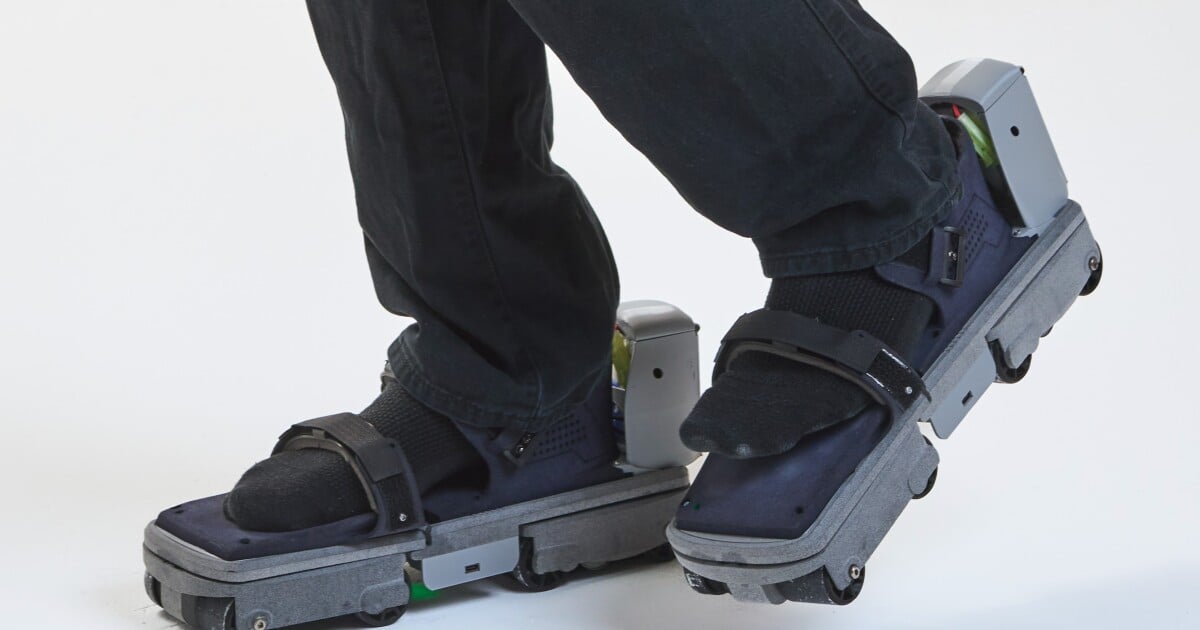While it’s easy enough to replicate users’ real-world head and arm movements in VR environments, walking is a bit trickier. After all, if a gamer is walking the length of a virtual city block within a game, they can’t very well be covering that same distance in real life … or at least, not without running into things.
One solution to this problem involves using what are known as omnidirectional treadmills. These tend to take the form of slippery round(ish) platforms that slope in toward the center like a bowl. As the user walks on that platform – facing in any direction – their feet continuously slip in to the middle, keeping them in place.
According to Freeaim, however, some people describe walking on such platforms as feeling more like skating, or like pushing awkwardly against the inside of a dish. Additionally, omnidirectional treadmills are relatively large and expensive, plus they require the user to be supported by a harness or wrap-around railing.
By contrast, Freeaim VR Shoes are more like electric roller skates.



$1k for the consumer version and they aim at reducing the price for future versions. I’ve been following the project for about 2 years and they seem like genuinely good people who want to make a cool and useful product. I’m personally more interested in these then in a kat walk vr treadmill.
Still, there’s been something of a pattern recently where new ‘smart’ devices end up losing support after like 3 years or so.
So, I’d hope those fancy shoes directly connect to your VR system, because if it relies in any way on the internet, they can just up and turn it off whenever they want as so many other companies have done.